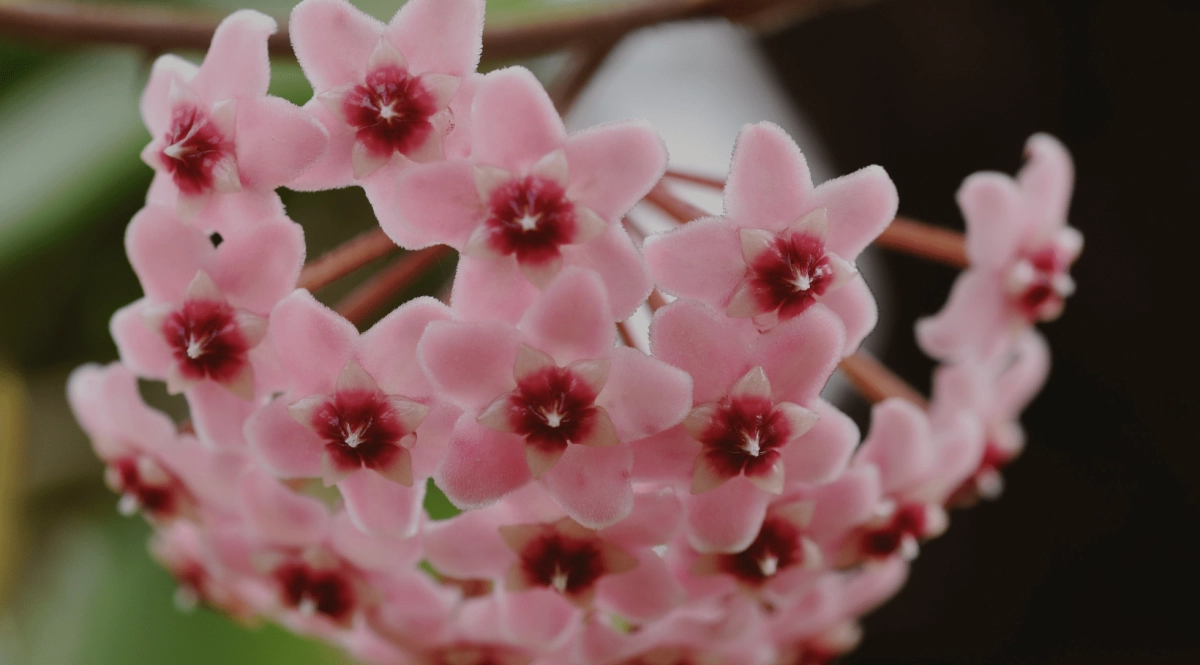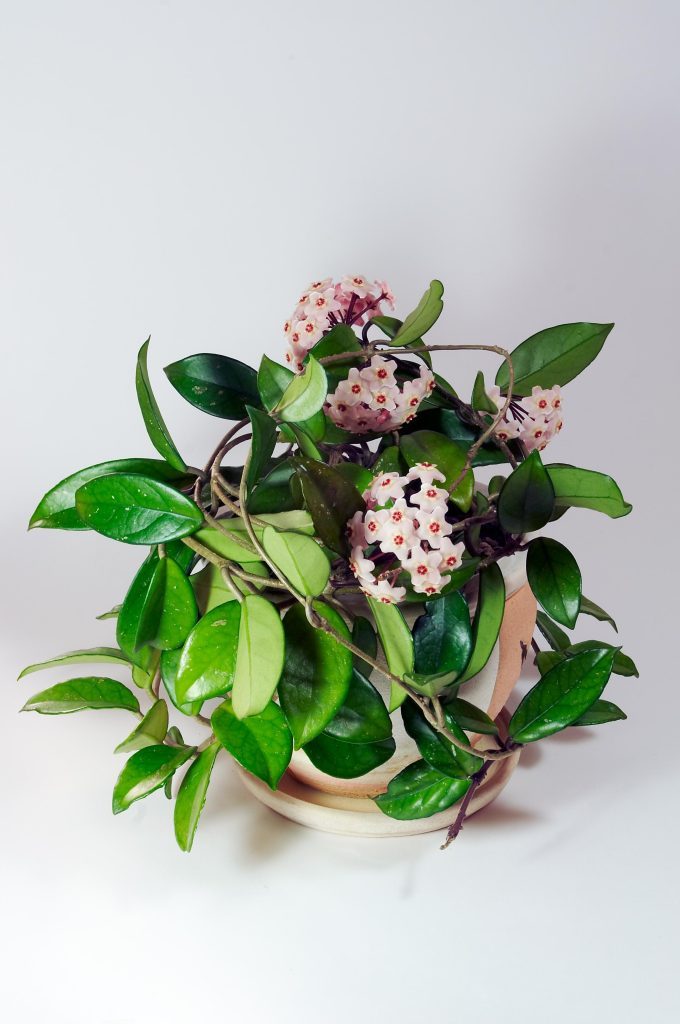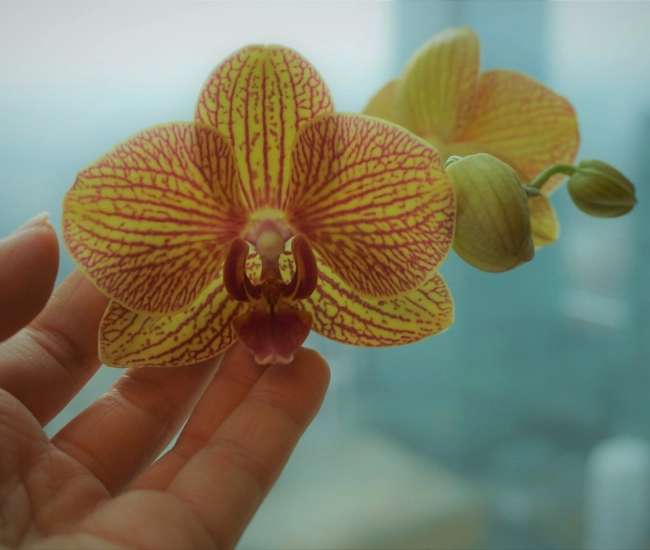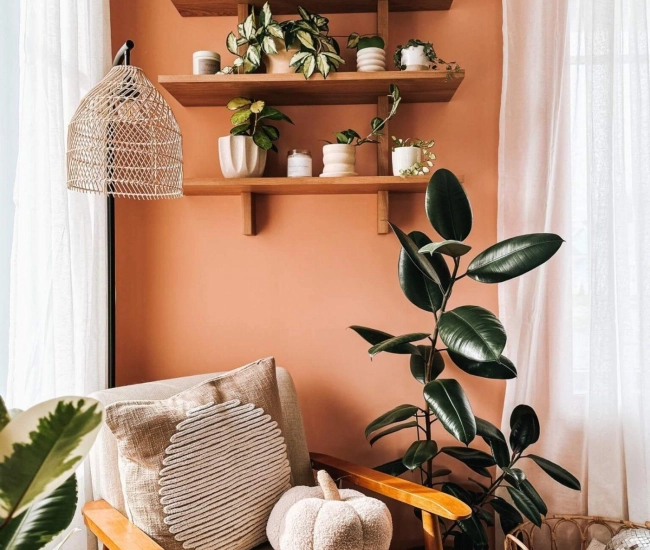
The History of the Hoya
Popular among amateur gardeners, the Hoya carnosa (also known as wax flowers or waxy Hoya) is part of the large family of Asclepiadaceae. The genus Hoya includes more than 300 species and varieties, each possessing their own characteristics in terms of leaf shape, habit, and the size of their inflorescences. This magnificent tropical plant, native to Asia, Malaysia, Australia, and India (depending on the species), grows slowly and requires very little care and attention.

Flower Fragrance
Although its foliage has beautiful ornamental qualities—succulent, glossy, green or variegated, or even oval or elongated—it is its flowers that steal the show. In spring and summer, small swollen spurs bearing flower buds appear at the end of certain stems (the shortest ones). As soon as its superb waxy-looking umbels open (hence the origin of its name), a sweet fragrance fills the room. It's impossible to resist its star-shaped flowers with red, pink, or purple stamens, depending on the variety.

Tender Care
Indoors, the Hoya carnosa (and all other Hoyas) prefers bright and warm spots. Indirect light, an east or west window, suits it perfectly. Too direct exposure burns its foliage.
For good leaf production and abundant flowering, temperatures ranging from 18° to 23°C are recommended. In summer, Hoyas can be taken outside, in the shade, and should be brought in before the arrival of cold nights (maximum 12°C).
From March to September, at intervals of 3 weeks, an application of fertilizer rich in phosphorus (P) and potassium (K) will ensure vigorous growth. It prefers a high humidity level. Adding gravel to the saucer increases humidity and moreover, you won't have to empty it after watering 😊

Watering and Pruning the Hoya: Yes, but…
Sensitive to soil that remains wet for too long, it is recommended to let the Hoya carnosa (and all others) dry out between waterings, especially in winter. However, do not wait for the foliage to shrivel and curl before watering again, as it may be too late. Deep waterings that thoroughly moisten the soil are preferable to small surface waterings. Do not let water stagnate at the bottom of the saucer unless it is filled with gravel. After flowering, the faded umbels will fall off on their own, no need to prune them. Moreover, pruning the flower stems prevents future blooms since new flower buds form on the same stem.
A Well-Deserved Rest
In winter, Hoyas need a rest period. Lower temperatures (12° to 15°C) and restricted waterings will be beneficial. The pruning of its longest stems can be done during this period (but not that of its flower stems).

Here are other varieties to discover:
- Hoya ‘Bella’: Small Hoya with narrow leaves and miniature umbels
- Hoya kerrii: Hoya with heart-shaped foliage

- Hoya carnosa ‘Krimson Princess’: Variegated Hoya with dark pink flowers

Text: Hélène Baril – Horticulturist, Speaker & Author
Tips and advice



